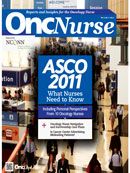Truth in Advertising
There are many things that influence this decision, including a physician's recommendation, health insurance stipulations, recommendations from relatives and friends, and, of course, advertising.
Am I just noticing the ads, billboards, and TV commercials more often, or have cancer centers increased their advertising? And is it the messages, rather than the number of them, that have caught my eye?
Not all cancer centers and oncology providers advertise, and there are some that provide straightforward, objective information in their ads. However, there are more than a few that have messages and patient testimonials that, in my opinion, are misleading. I’m not alone in this observation. Back in December 2009, Natasha Singer wrote a piece in The New York Times titled, “Cancer Center Ads Use Emotion More Than Fact” (http://nyti.ms/q7CzWY). She reviewed multimedia ads from prestigious cancer centers and found that they “often use superlatives, promote the latest technologies, promise unique care, or recount miraculous patient recoveries.” Not much has changed in the 2 years since that article was published, except that I’m noticing that more and more local and regional cancer providers are doing the same thing in their ads.
Patient testimonials always get my attention, and as Singer noted, it’s the patients who have been cured or have far outlived their projected life expectancies that appear in these ads. I’ve never seen an ad featuring a person with advanced cancer or one who is visibly affected by the disease. In fact, in the ads I’ve seen, patients are smiling and appear to be vibrant and active, with some even holding tennis rackets or golf clubs. Both the stated and implied message is that cancer treatment at the featured facility will fully restore health and well-being. And sometimes, the treatments do, in fact, result in what many would call, “miraculous outcomes.” However, the ads do not note that these results are atypical, and patients are led to believe that they too will respond this well to treatment. Even weight loss ads include the disclaimer that the results are not typical, yet cancer treatment ads are not required to state this.
Some of the patient testimonial ads link a new treatment modality with a desirable treatment outcome, such as “freedom from cancer” or “life without cancer.” The problem with these ads is that they are only partly correct; it may be true that no other facility provides the new treatment, but it’s misleading to so visibly link the new treatment with curing the patient.
Other ads focus on the facility itself and use adjectives such as “the first,” “the best,” and “the only” to describe some facet of the services it offers. Some ads are more specific and claim that the facility has “the highest” or “unsurpassed” cure rates. Because this is advertising, these claims don’t need to be substantiated.
It’s not surprising that patients are asking about a facility’s cure rate, complication rate, death rate, and so on. However, even these numbers can be misleading. Selection bias can occur and skew the data. For instance, the cure rates are higher for a community oncology practice that only treats patients with early-stage cancers than for a cancer center that is administering investigational agents to patients with metastatic disease. And conversely, outcomes for patients who require complex treatment are better in facilities in which specialized services are routinely provided (eg, cancer centers) than in facilities that rarely provide this type of cancer treatment.
Choosing an oncology provider is a big decision when a person is diagnosed with cancer. There are many things that influence this decision, including a physician’s recommendation, health insurance stipulations, recommendations from relatives and friends, and, of course, advertising. It’s unclear to what extent advertising influences this decision, but since advertising of cancer care is so prevalent these days, it’s worth examining.
Take a look at the advertising being done by your practice or facility. Is the information accurate? Is there anything that could be misconstrued by a patient or is potentially misleading? Are claims based on solid evidence and data? If you see something disturbing, take action and make your concerns known. Nurses are patients’ advocates, and patients deserve fair and balanced information about cancer treatment care and outcomes.
Lisa Schulmeister, RN, MN, APRN-BC, OCN®, FAAN, is an oncology nursing consultant and adjunct assistant professor of nursing at Louisiana State Health Sciences Center in New Orleans, LA, and the editor-in-chief of OncLive Nursing.

Innovative Program Reduces Nurse Turnover and Fosters Development
Published: September 12th 2024 | Updated: September 12th 2024The US Oncology Network (The Network) has developed one of the most comprehensive programs in the nation to support the professional development and retention of new oncology nurses.


